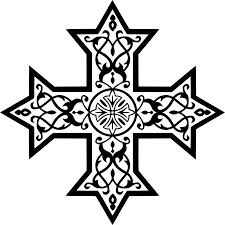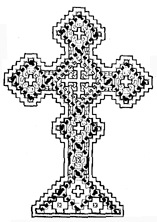 We know, with a fair degree of certainty, that Jesus spent his adult life in and around the area now known as Israel, and his childhood in Egypt. The New Testament specifically mentions Jesus in Egypt in Matt. 2:
We know, with a fair degree of certainty, that Jesus spent his adult life in and around the area now known as Israel, and his childhood in Egypt. The New Testament specifically mentions Jesus in Egypt in Matt. 2:
[13-15] And when they were departed, behold, the angel of the Lord appeareth to Joseph in a dream, saying, Arise, and take the young child and his mother, and flee into Egypt, and be thou there until I bring thee word: for Herod will seek the young child to destroy him. When he arose, he took the young child and his mother by night, and departed into Egypt: And was there until the death of Herod: that it might be fulfilled which was spoken of the Lord by the prophet, saying, Out of Egypt have I called my son.
and then again, briefly:
[19] But when Herod was dead, behold, an angel of the Lord appeareth in a dream to Joseph in Egypt . . .
With such scant mention, it is perhaps not surprising that American Christians give little thought to Egypt as an important New Testament location. It would not come to mind if someone were to use the phrase, “The Holy Land.” But if the life of Jesus is important, as it most assuredly is to Christians, than Egypt is indeed very important to Christianity. As John Milton observed:
“The childhood shows the man,
As morning shows the day.”
— Paradise Regained. Book iv. Line 220.
Certainly, then, the childhood of Jesus showed the person He would become – and that childhood was spent in Egypt.
A large Jewish population existed in Egypt during the time of Jesus. Presumably, the Holy Family resided within this Egyptian Jewish community. Later, during the reign of the Emperor Nero, approximately a dozen years after the Ascension of Jesus, Saint Mark brought the teachings of Christianity to this community, and to other Egyptians as well. Archaeological evidence points to the spread of Christianity in Egypt following Saint Mark’s evangelical mission: a 2nd Century fragment of the Gospel of Saint John, written in the Coptic language, has been found in Upper Egypt, and other New Testament writings from around the year 200 AD have been found in Middle Egypt.
The Coptic language is the final stage of ancient Egyptian script. Coptic ultimately became the term used to describe the Christian Church established in Egypt on the basis of Saint Mark’s teachings, now 19 centuries old. During that time, the Coptic Church (the official name of the church is The Christian Coptic Orthodox Church of Egypt) has had a significant impact on the development of Christianity. Saint Athanasius, the Coptic Pope of Alexandria for 46 years (327 A.D. to 373 AD), is the author of the Nicene Creed. Saint Anthony, regarded as the first Christian monk, was a Copt from Upper Egypt.
There is very little conflict between basic Coptic teachings and those of other early Christian churches and, indeed, the Coptic Church was quite vigilant in campaigning against Gnosticism. The Copts did, sadly, suffer from the political maneuverings of others. Saint Dioscorus had the faith and the courage to tell the Emperor Marcianus that, “You have nothing to do with the Church.” This position against the powerful Roman state, along with some semantic wrangling over whether or not the Coptic Church preached monophysitism, caused the Coptic Church to be split off – in fact, exiled – from Western Christian churches. One has the sense that neither Jesus nor Saint Mark would have been pleased with this poor treatment of Egyptian Christians, and one hopes that a reconciliation will be forthcoming.
There are currently approximately 9 million Copts in Egypt, and another 1.2 million worldwide. Their religious practices would be familiar to most Christians, with some exceptions, one being fasting: virtually all Copts fast through Lent, and strict Copts endure some sort of fasting 210 days out of each year. The Coptic Church is headed by a Pope who, unlike his counterpart in Rome, does not claim papal infallibility. Divorce is permissible in certain cases, including adultery and bigamy. The Coptic Church refuses to canonize official positions on certain issues, including abortion, believing “that such matters are better resolved on a case-by-case basis by the father of confession, as opposed to having a blanket canon that makes a sin of such practices.”
One final item to mention is the Coptic Cross, a simplified version of which is illustrated below. There are many variations of this design, and it is a matter of great pride amongst Copts, many of whom have the Cross (usually in color) tattooed on their forearms.

*******
© William Mackis. Bible Quotations are from King James version.
